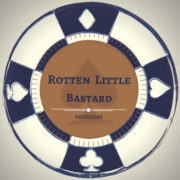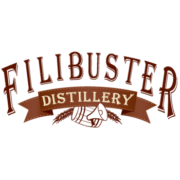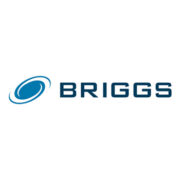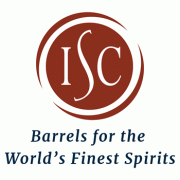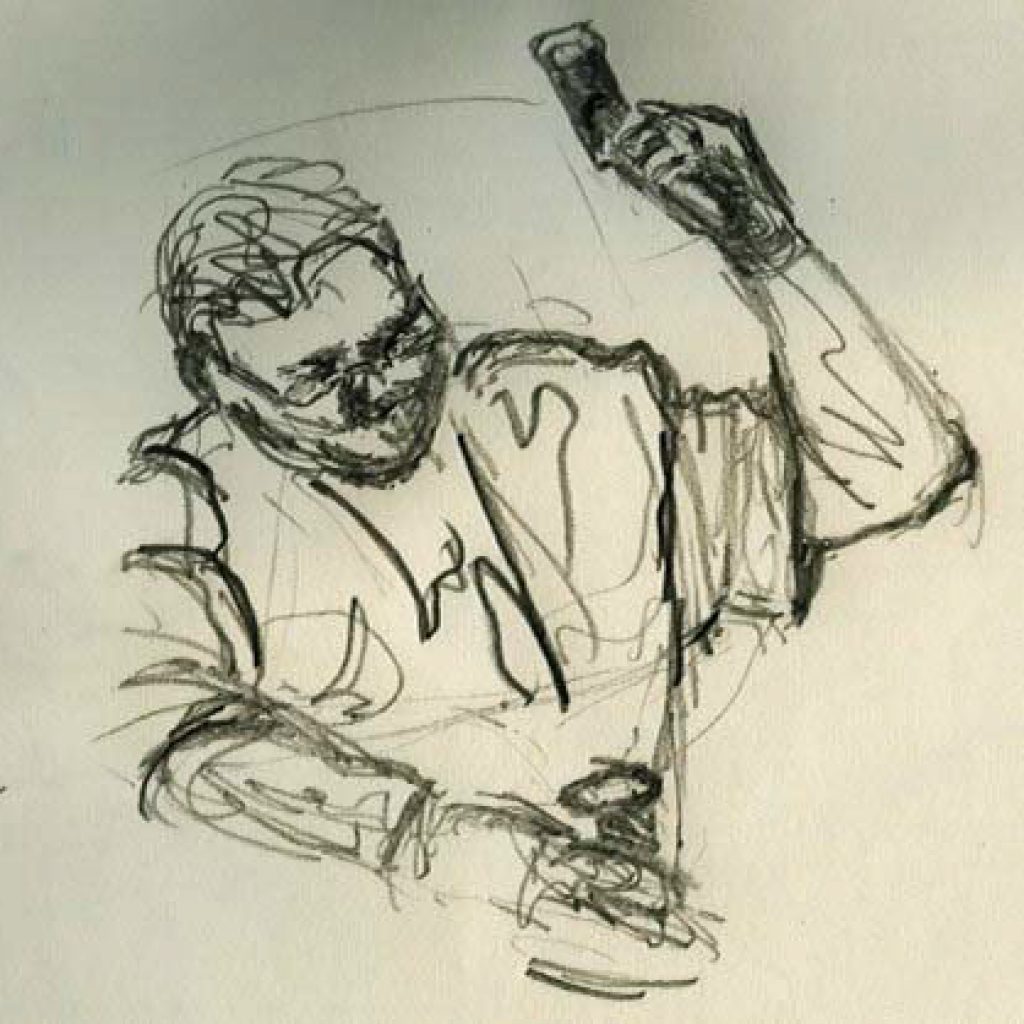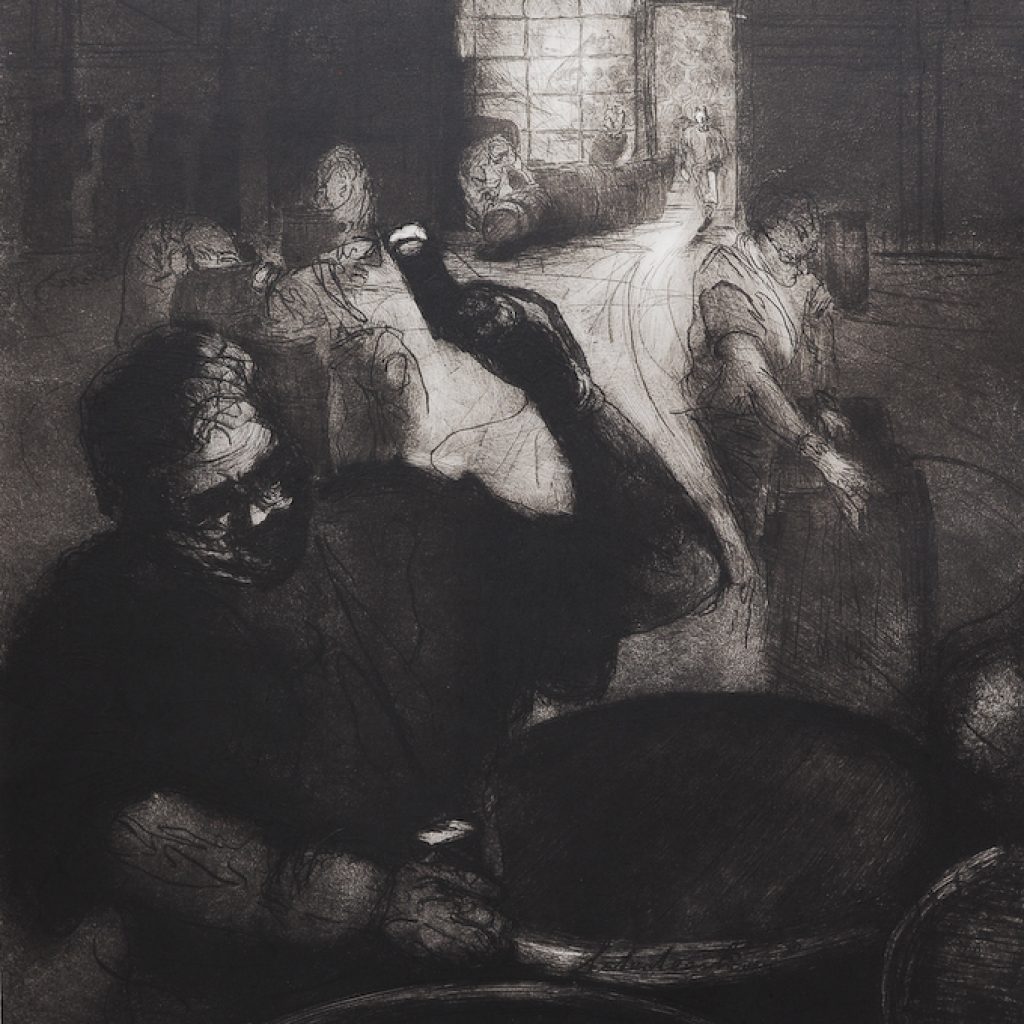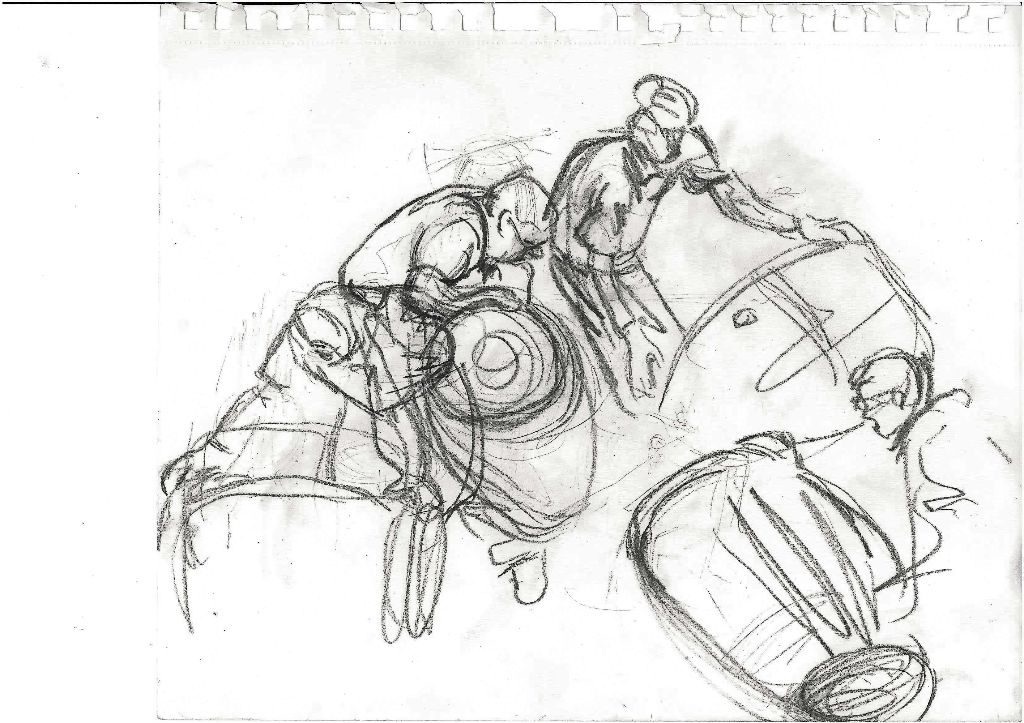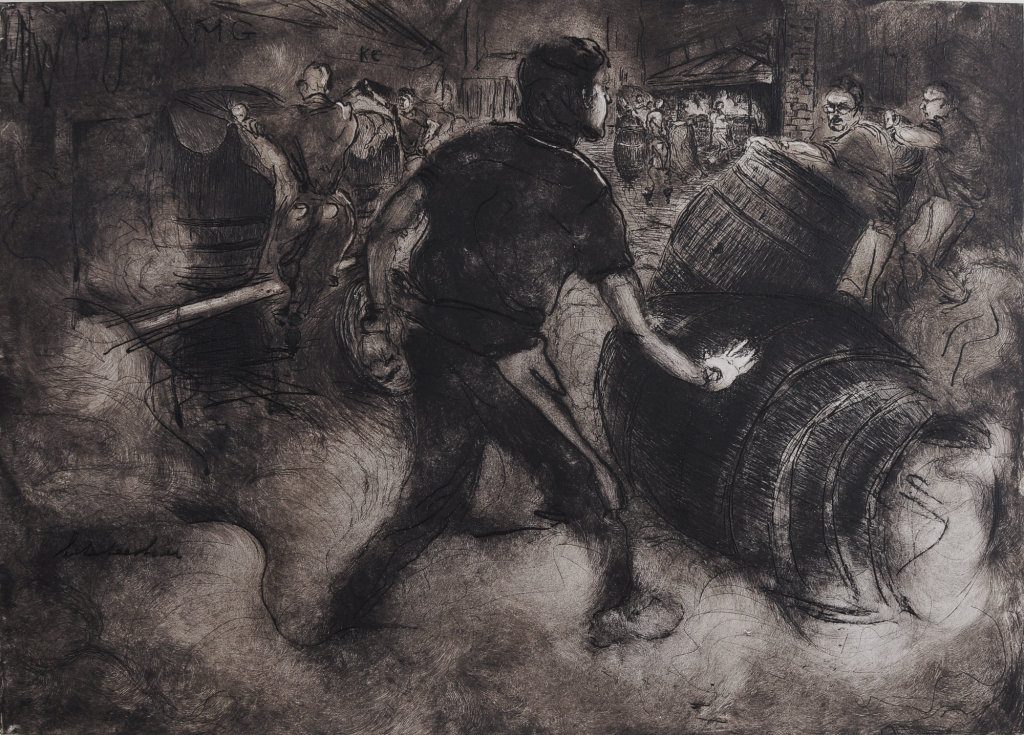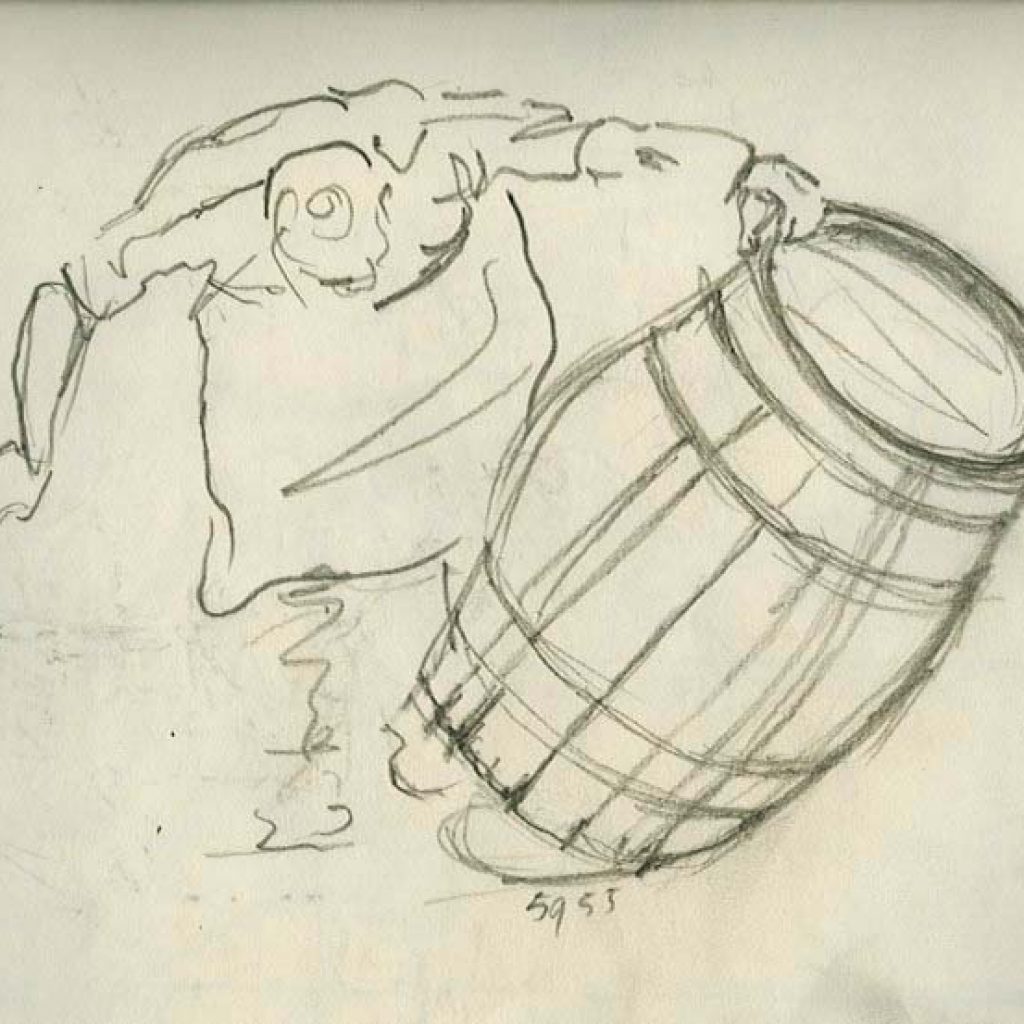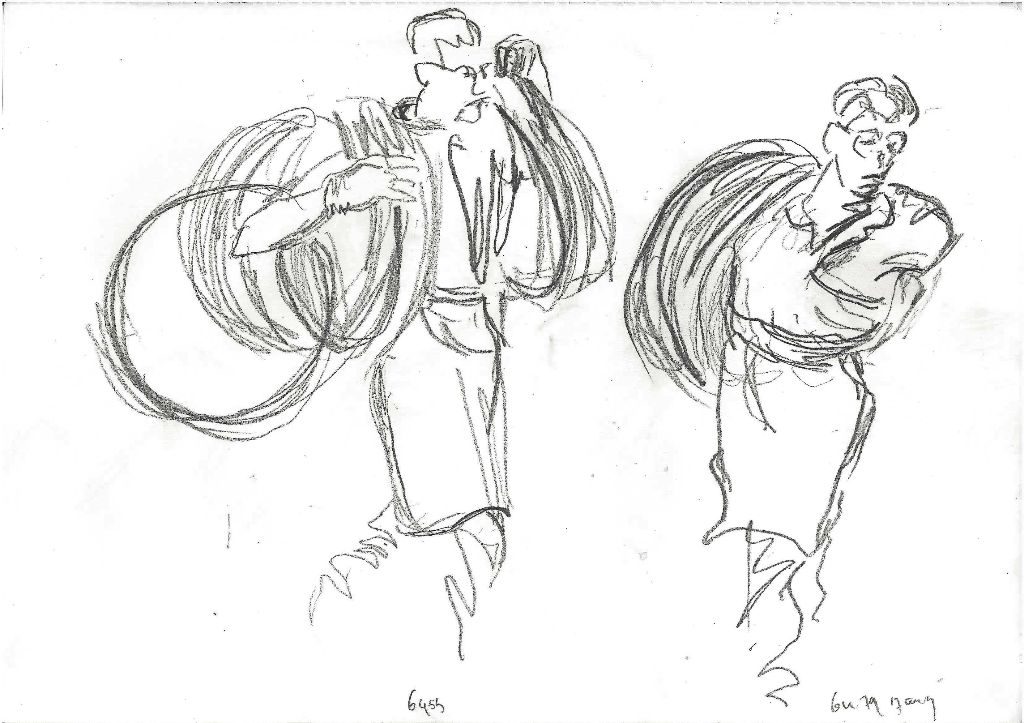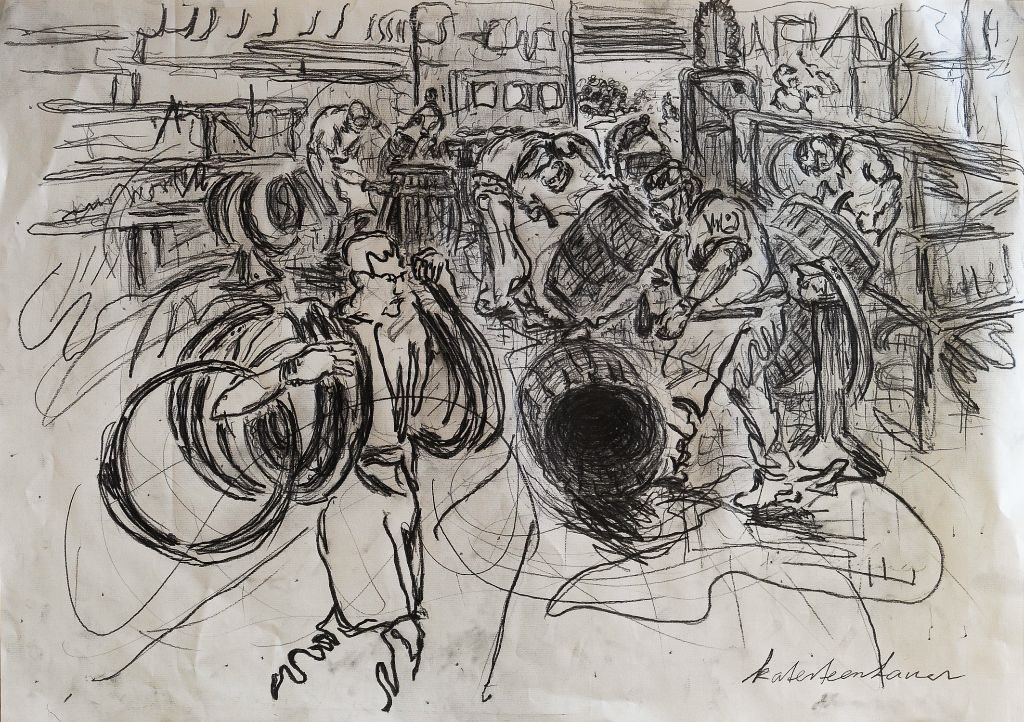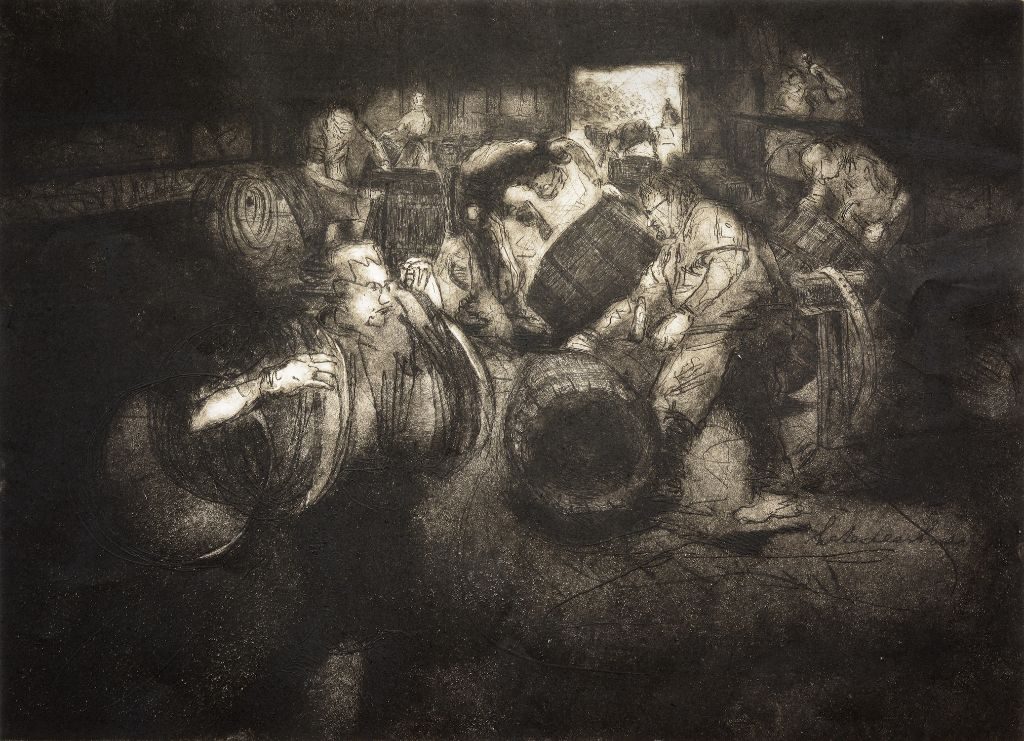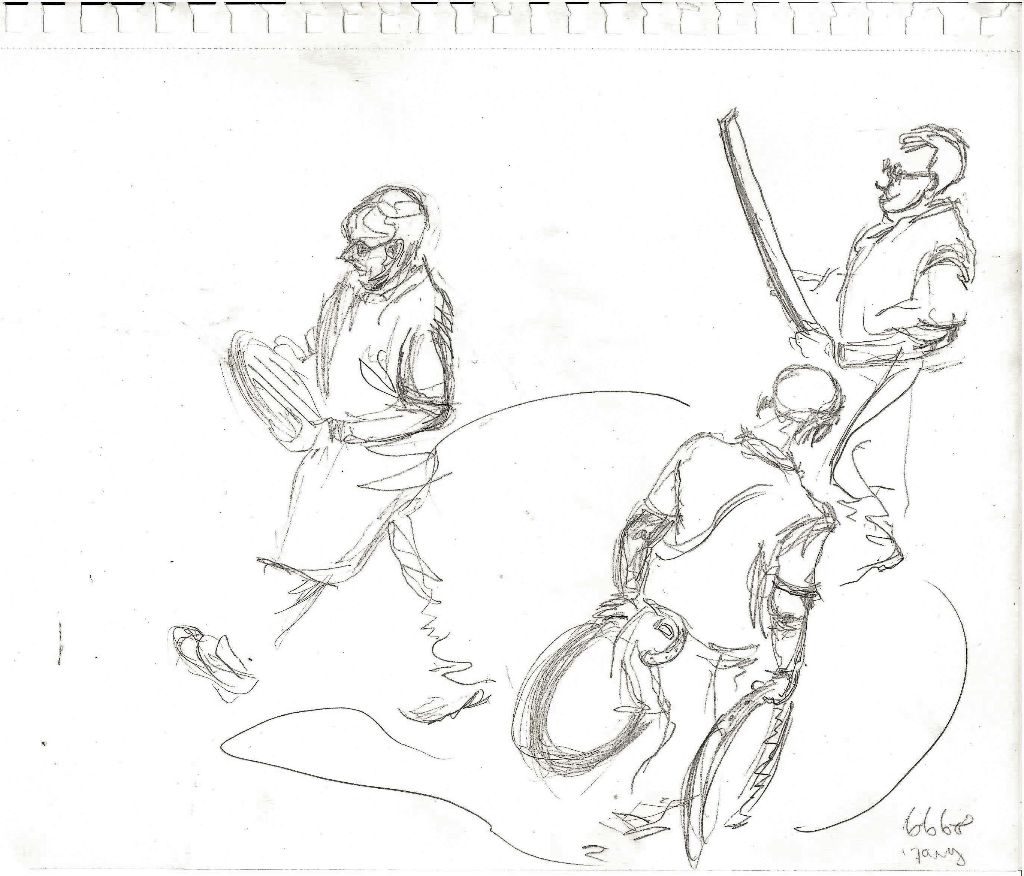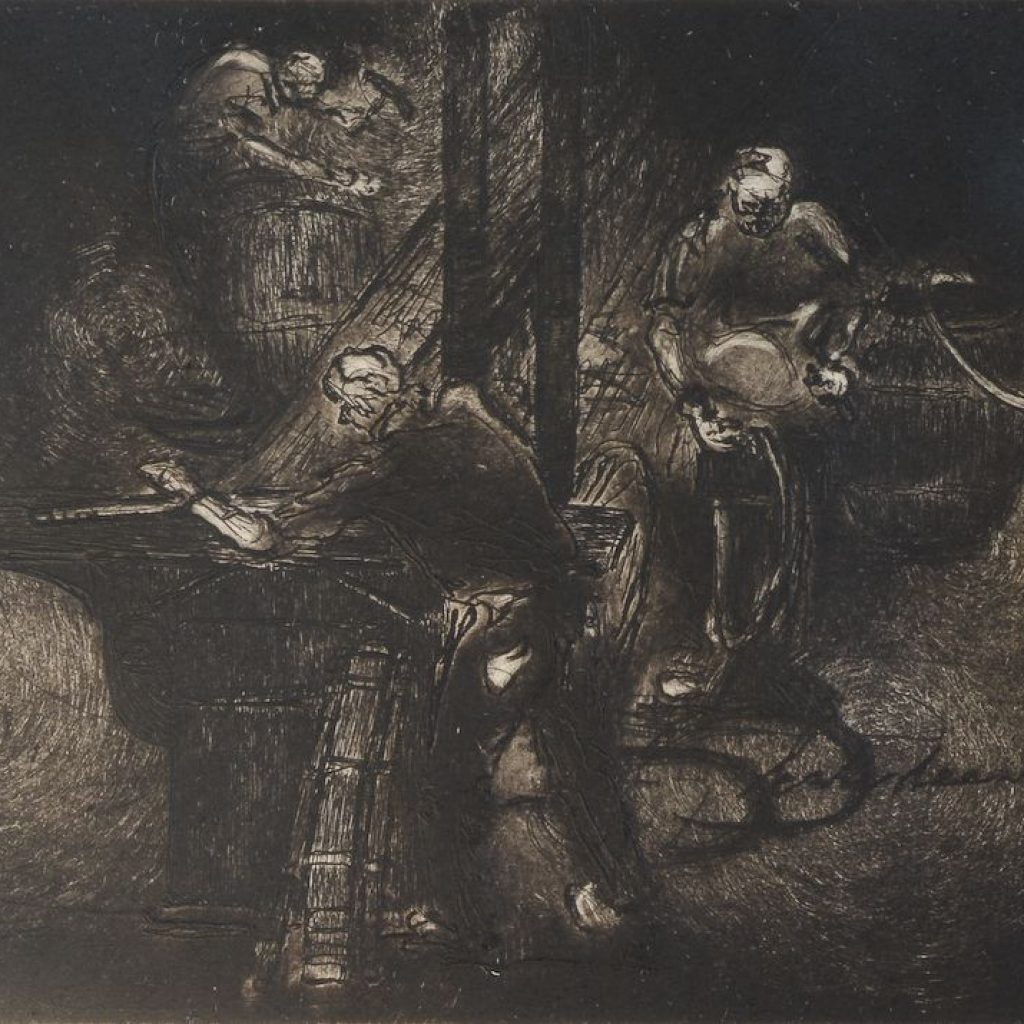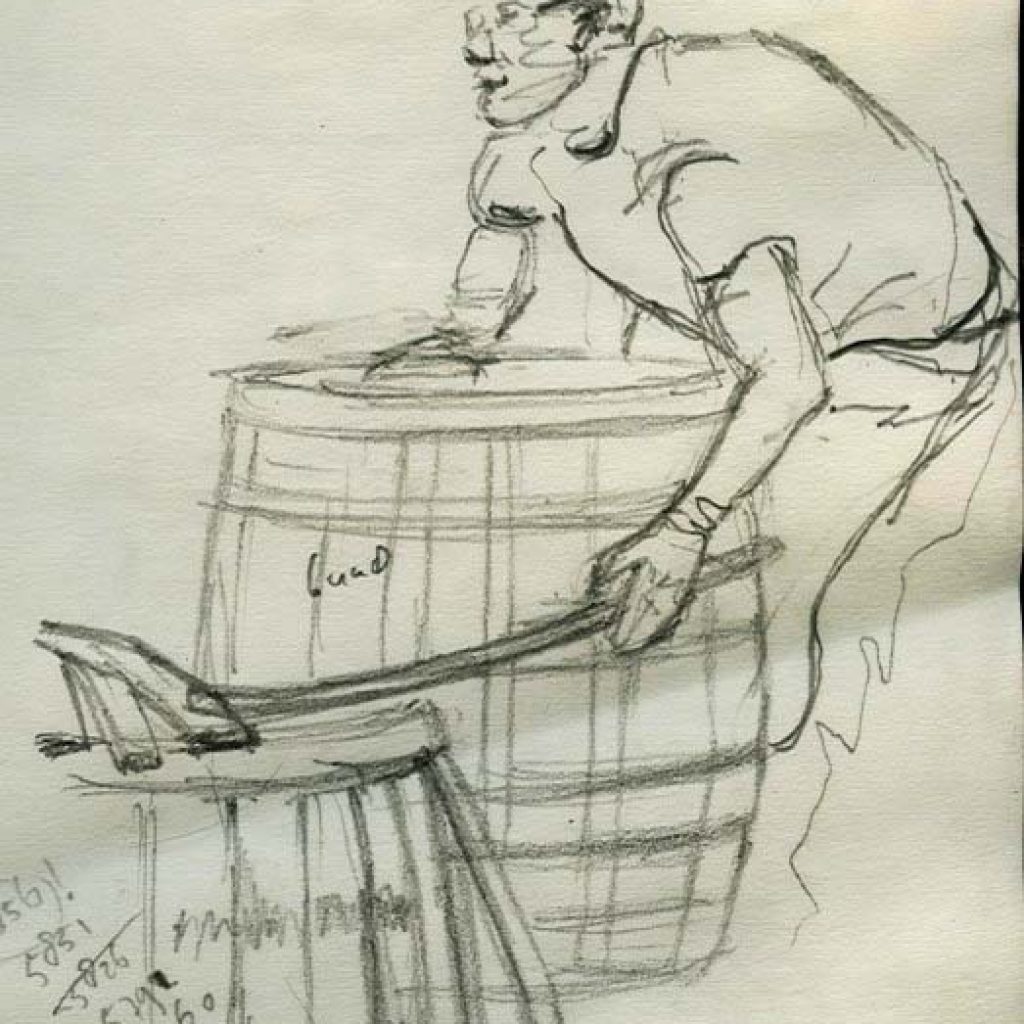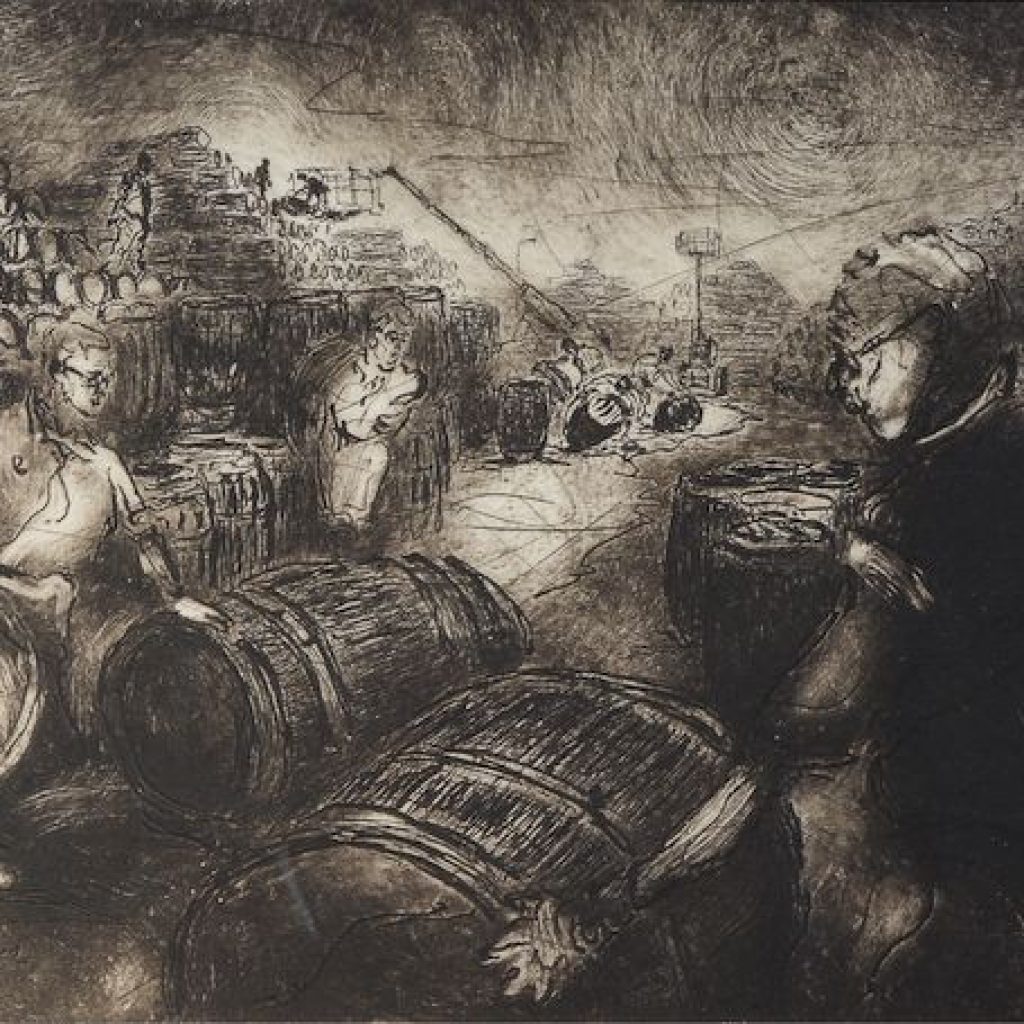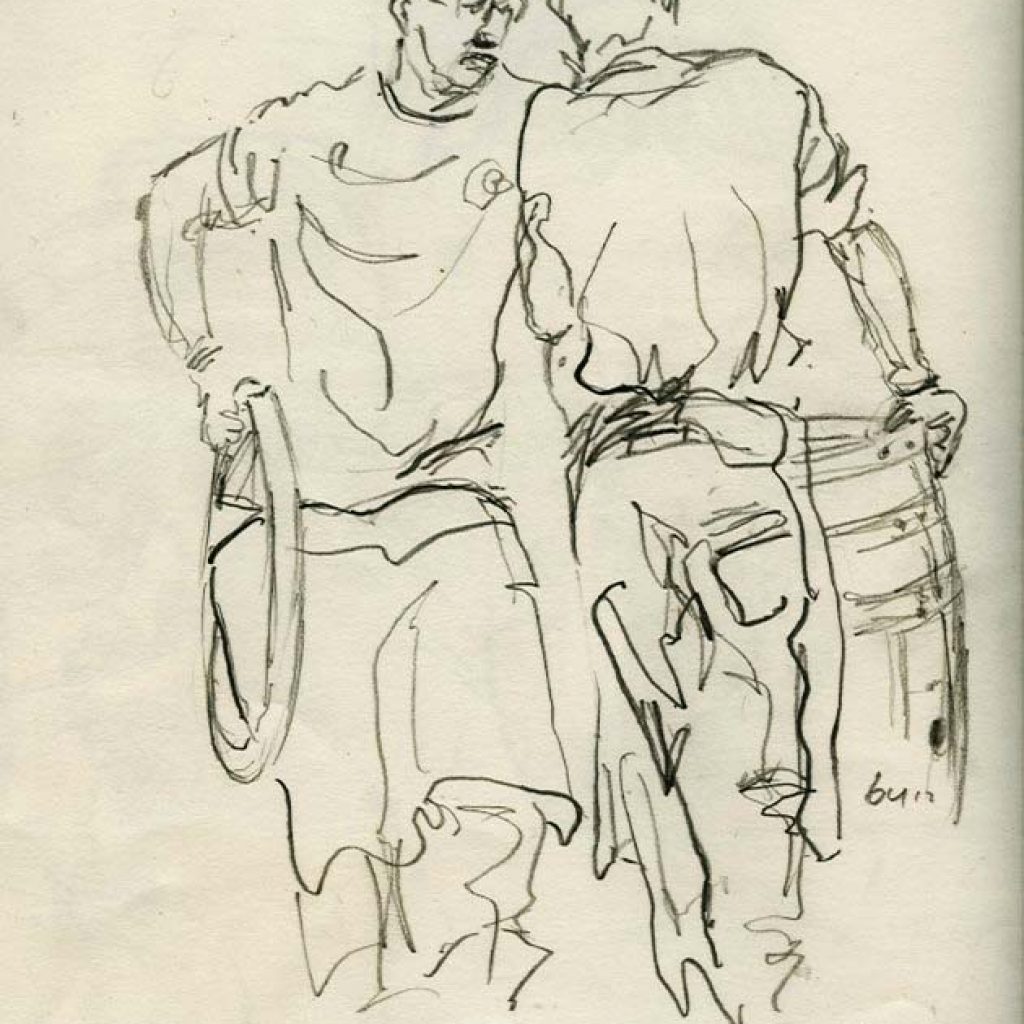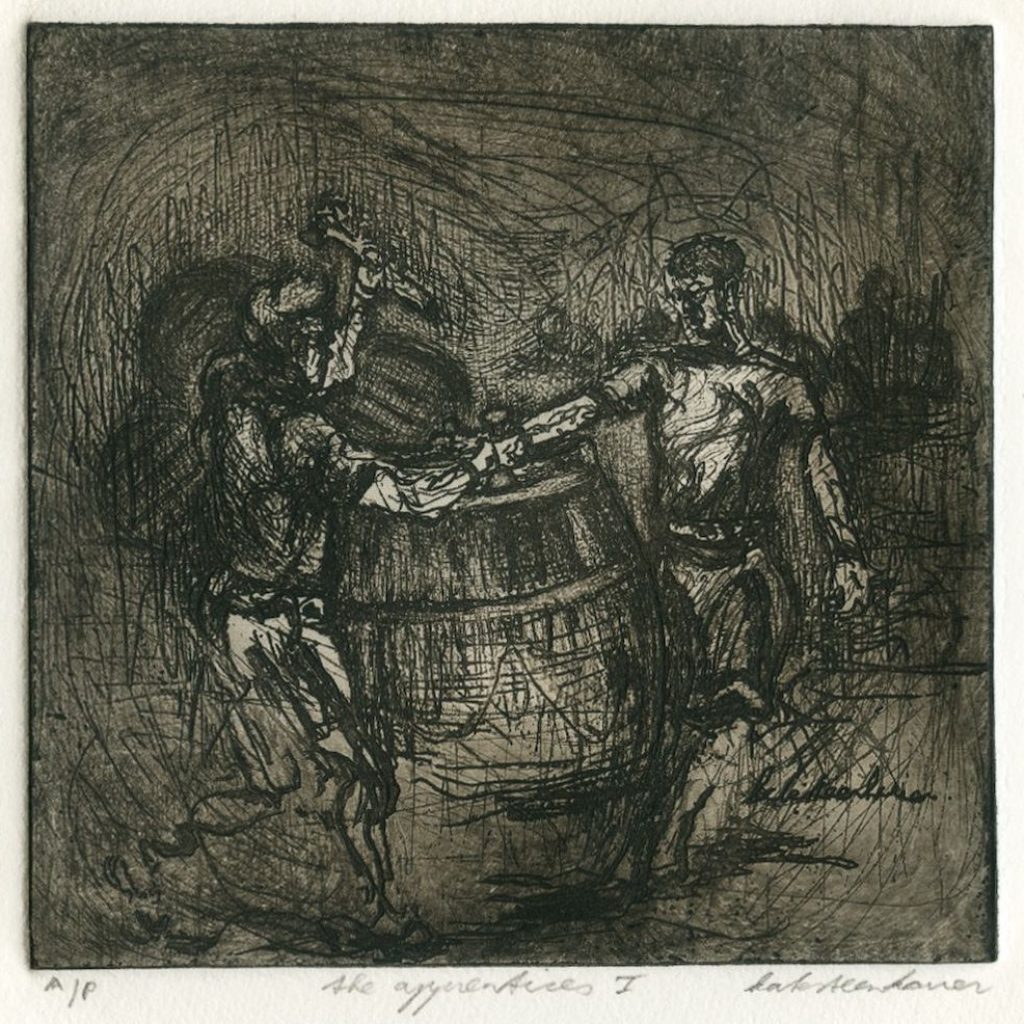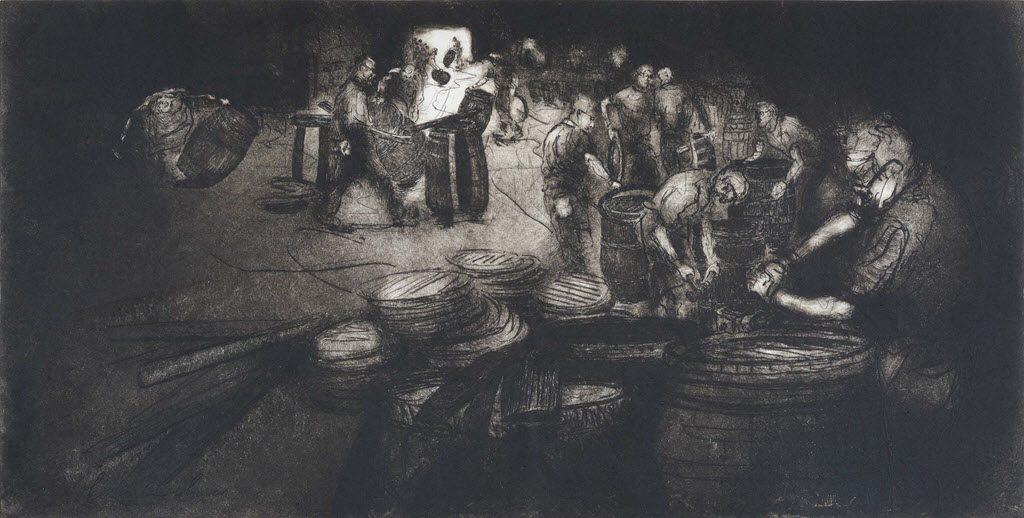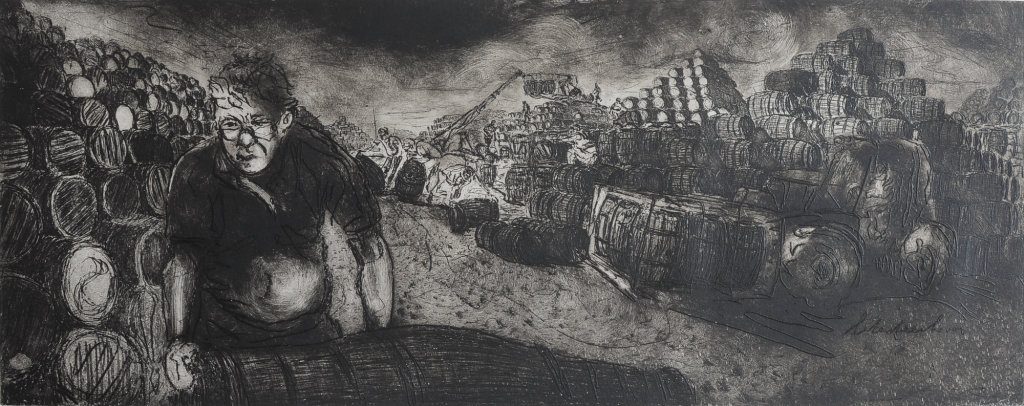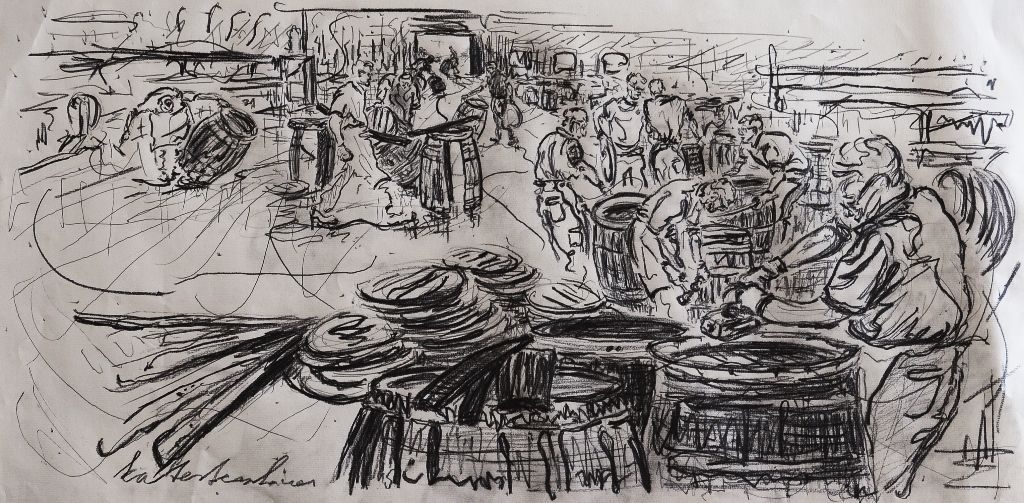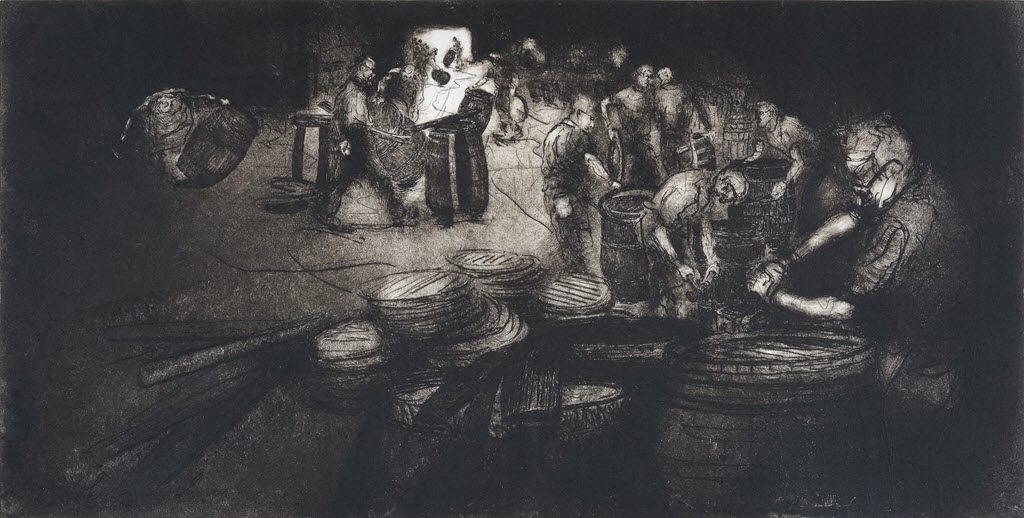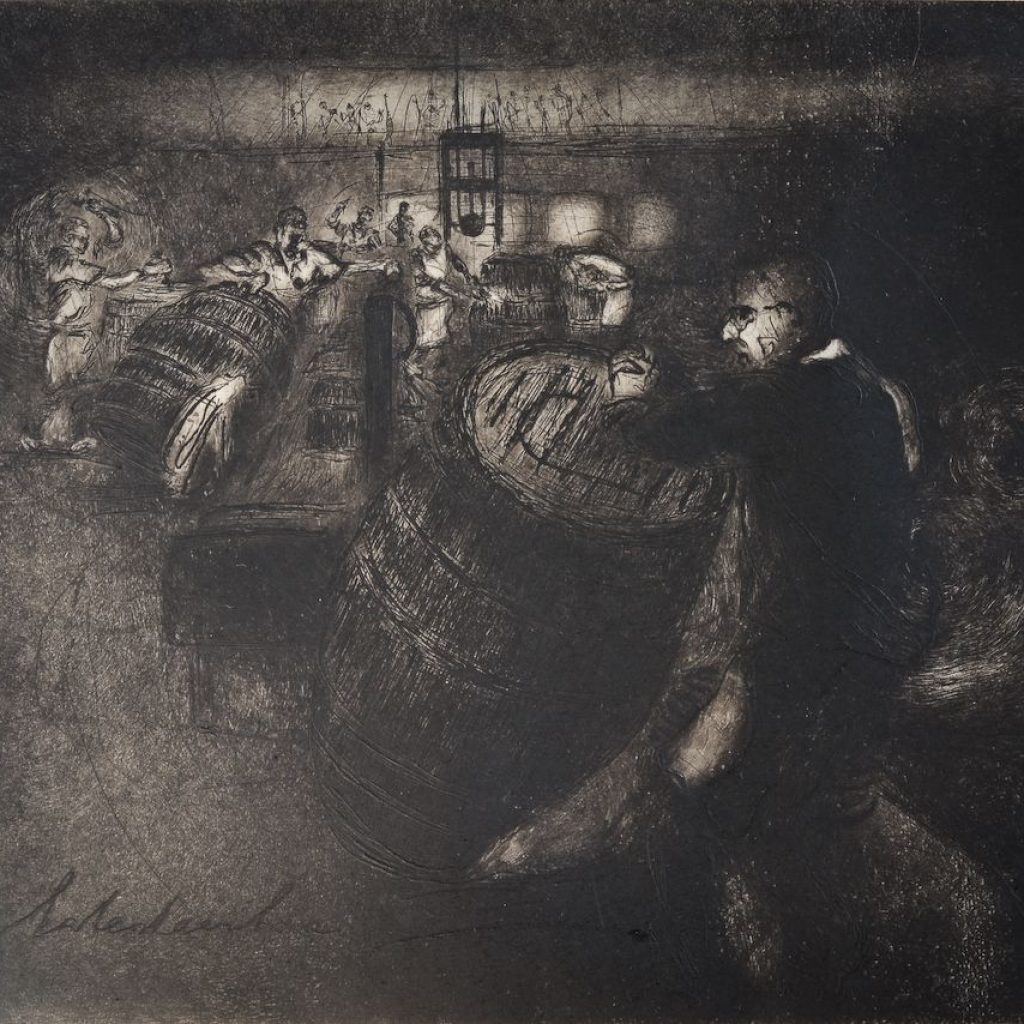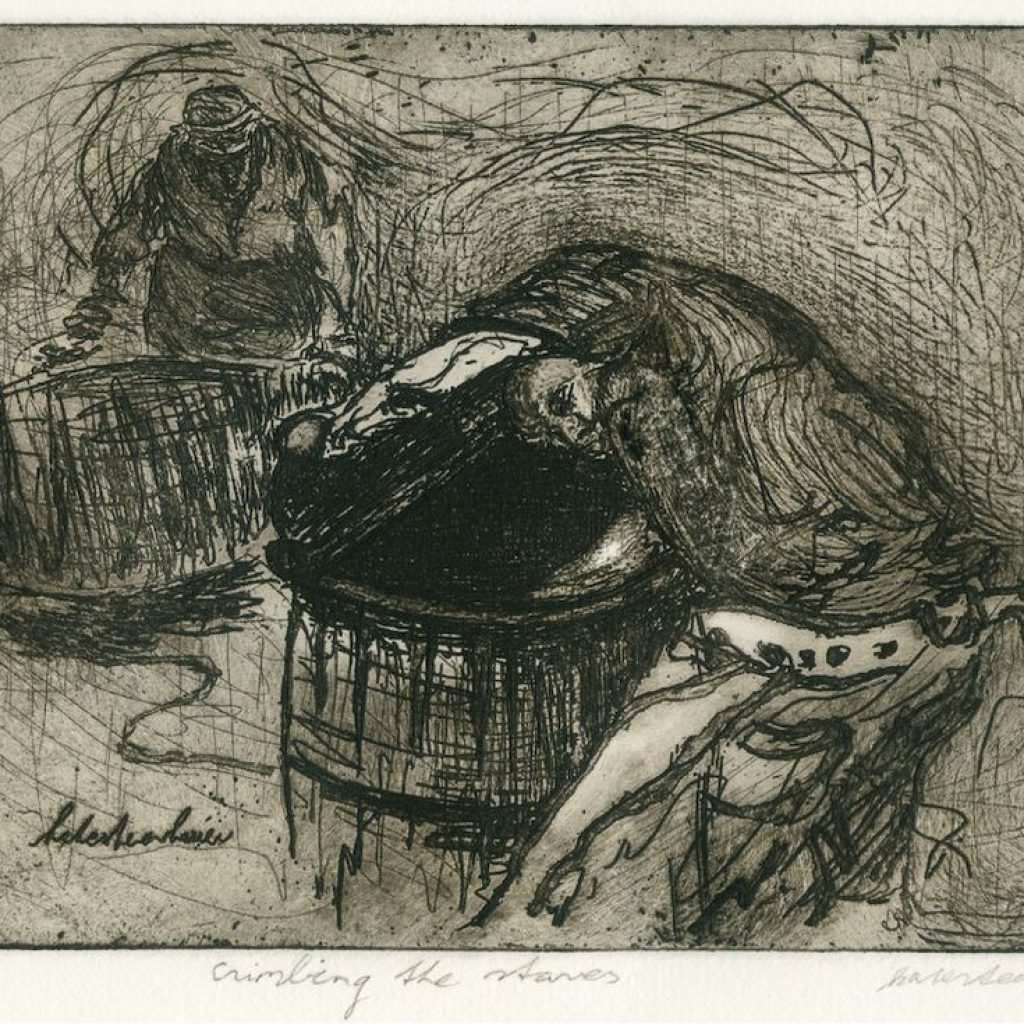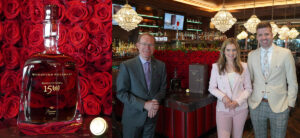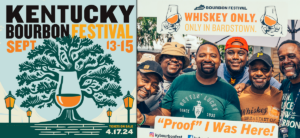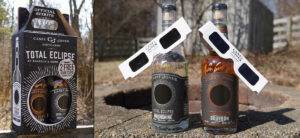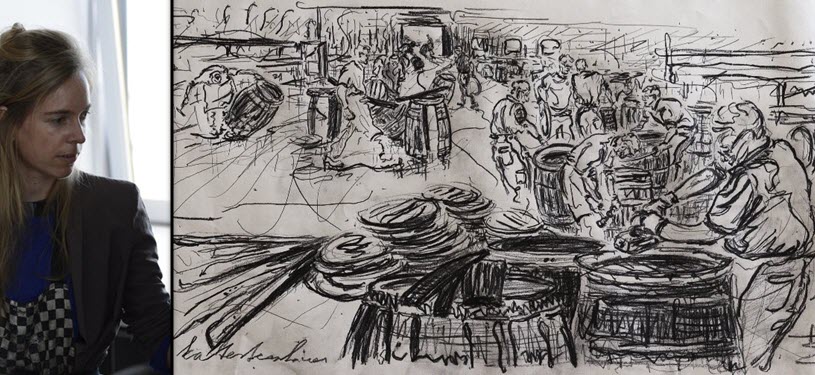
Speyside is home to some of Scotland’s most beautiful scenery and lush landscapes as, as well as roughly half of all the Scottish whiskey distilleries (and the Loch Ness Monster.) In the center of many of these distilleries is Speyside Cooperage located in Aberlour, a working cooperage in the United Kingdom where the public can experience the centuries old art of coopering.
Artist Kate Steenhauer has captured some of that ancient art with her own black and white drawings and etchings. Kate’s work “Topping the Cask at Speyside” will soon be on display in a solo show at the Meffan Gallery. Her work captures life behind the iconic whiskey industry, an industry associated with traditional skills and craftsmanship, yet remaining a modern and vital part of the whiskey landscape of Scotland and the world.
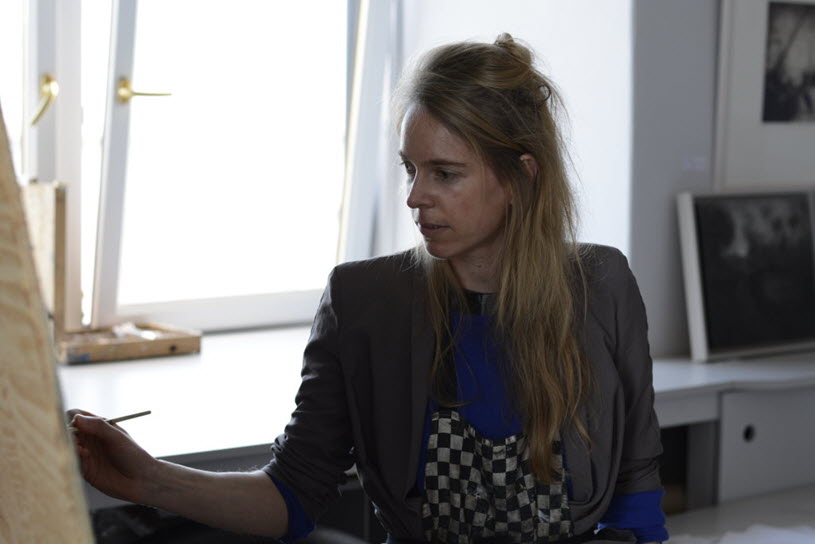
Stay Informed: Sign up here for the Distillery Trail free email newsletter and be the first to get all the latest news, trends, job listings and events in your inbox.
Originally from the Netherlands, Kate’s diverse background has taken her from a civil engineering career, including a PhD in Coastal Engineering from the University of Aberdeen, to where she is today; a full-time artist.
Kate says, “I draw upon my engineering background, skills and network to creatively explore the industrial Scottish landscape using oil paint and intaglio printmaking techniques. I have won several awards including a Royal Scottish Academy Award, and exhibit regularly at the Royal Scottish Academy in Edinburgh, the Mall Galleries and Royal College of Art in London. My work is in private collection as well as the Maritime Museum of Aberdeen and Angus Council in Scotland.”
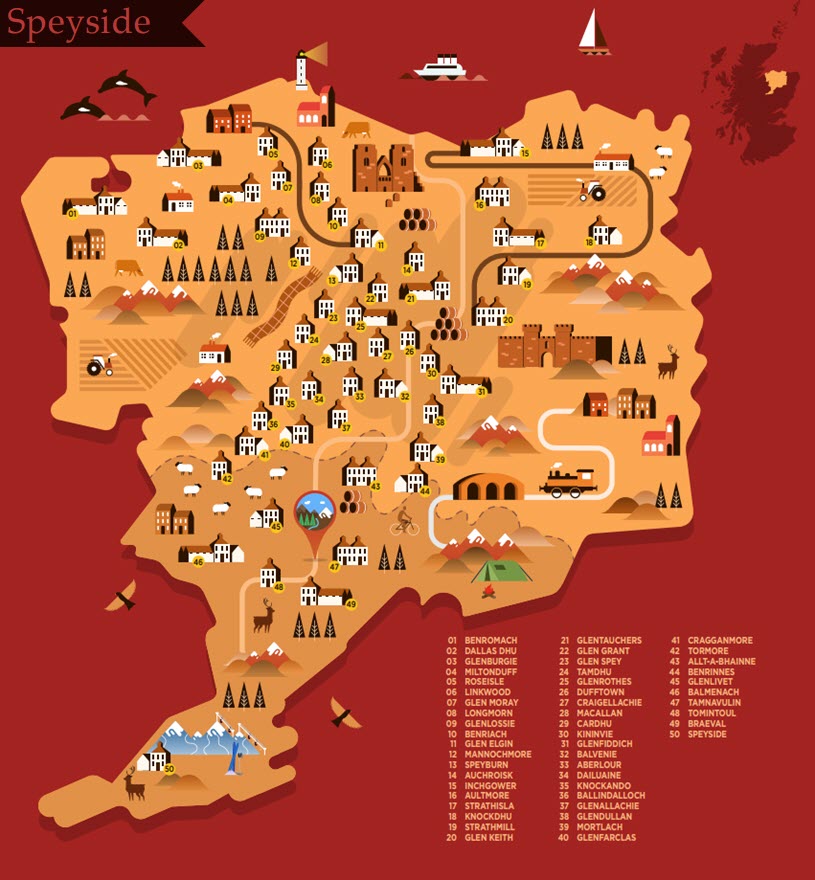
Speyside Distillery Map.
Her current project tackles life behind the iconic whiskey industry animating coopers and coppersmiths who play a key part within this Scottish economic and cultural asset. The whiskey industry is one that is associated with tradition of skill and craftsmanship, yet the trade remains a modern and vital part of the industrial landscape of Scotland, as seen in the global demand for whiskey.
Topping the Casks at Speyside
Her “Topping the Casks at Speyside” drawings were created on location, where she witnessed first-hand the work and production at Speyside Cooperage, one of several working cooperages in Scotland.
Kate says, “The dynamic movement of the coopers dancing around their barrels, busy shaping, shaving and charring casks instantly captivated me. With their well worn leather aprons, traditional tools and hand-crafted methods it is like entering a Van Gogh painting.”
Each drawing is transformed into a limited edition copper plate etching. The drawing onto the copper plate is built up in layers. Each layer exposing unprotected copper is bathed in acid. The acid bites into the bare metal. The length of time the plate stays in acid depends on the depth of incision needed. The plate is then inked up and put through a high-pressure printing press together with a sheet of paper. The paper picks up ink from the etched lines making a print. I also leave a lot of dark areas of ink on the plate, carefully wiping to add tone, texture and atmosphere to the composition. Every print within the limited edition is therefore unique, because of the application of various wiping techniques. James McNeill Whistler, one of the principal American artists of the late 19th century, also used this technique emulating with a wide range of wiping effects of mist, sunset or night.
Much of Kate’s inspiration comes from Scottish artist James McBey (1883 – 1959). McBey, a self-made man, official war artist, became an American citizen and has prints in collection in museums and public art galleries worldwide. She looked at McBey’s notes, and studied his etched plates and prints from the inexhaustive collection at Aberdeen Art Gallery. Incidentally McBey met a keen art collector and a director of a wine merchant, planning to release a fine Scotch whiskey on the American market, in London 1923. Outstanding details were the name and the label. McBey, a keen sailor, recommended Cutty Sark, which had just returned from years of trading and was a lot in the news, as an admirable name for a fine ‘Scots’ Whiskey, drawing the design of the label on a napkin. Cutty Sark was launched to immediate international acclaim becoming one of the best-selling Scotch whiskeys in the U.S.
You can see several of Kate’s drawing below. You can see more of Kate’s work on her website here.
Kate Steenhauer’s Topping the Casks at Speyside Cooperage Gallery
Click any image to enlarge.
Please help to support Distillery Trail. Sign up for our Newsletter, like us on Facebook and follow us on Twitter.
Resources




